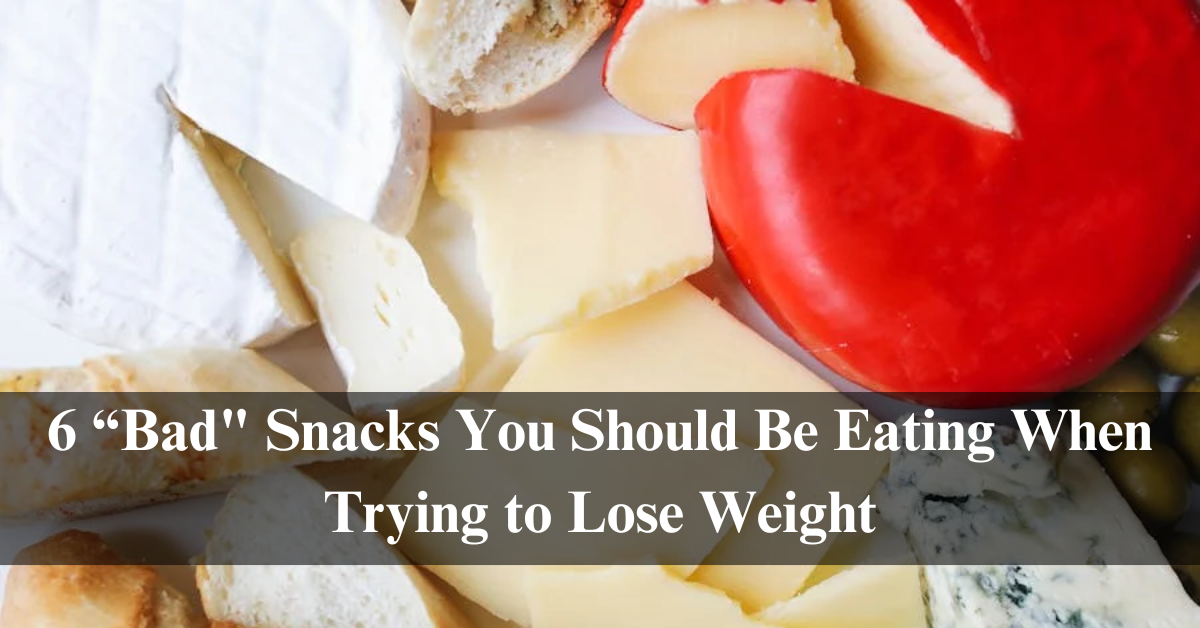When trying to lose weight, many people tend to label foods as either “good” or “bad.” However, this binary thinking can be misleading.
Some snacks often deemed unhealthy can actually be beneficial when consumed in moderation and as part of a balanced diet.
Here are six “bad” snacks that you should consider incorporating into your weight loss plan.
1. Popcorn
Why it’s considered bad:
Popcorn is often associated with the unhealthy versions found in movie theaters, which are loaded with butter, salt, and sometimes even sugar.
Why it’s good:
Air-popped popcorn is a low-calorie, high-fiber snack that can help you feel full longer. It’s a whole grain, which means it contains essential nutrients and dietary fiber. A serving of air-popped popcorn has around 30 calories per cup, making it a great low-calorie snack option. To keep it healthy, avoid adding excessive butter and salt. Instead, try seasoning with a sprinkle of nutritional yeast, a dash of cinnamon, or a pinch of sea salt.
2. Dark Chocolate
Why it’s considered bad:
Dark chocolate is often seen as a high-calorie, sugary indulgence.
Why it’s good:
Dark chocolate with 70% cocoa or higher contains less sugar and more beneficial nutrients compared to milk chocolate. It is rich in antioxidants, which can help combat oxidative stress and inflammation. Additionally, dark chocolate can improve heart health and increase brain function. Eating a small piece of dark chocolate can satisfy sweet cravings, which may prevent you from reaching for less healthy options. Aim for a square or two per day, and enjoy it mindfully.
3. Nuts
Why they’re considered bad:
Nuts have a reputation for being high in fat and calories.
Why they’re good:
Nuts are nutrient-dense, providing healthy fats, protein, and fiber, which can help keep you full and satisfied. They also contain various vitamins and minerals, such as vitamin E, magnesium, and selenium. Almonds, walnuts, and pistachios are particularly good choices. The key is portion control; a small handful (about 1 ounce) can make a nutritious snack without adding too many calories. Nuts can also be paired with fruit for a balanced snack.
4. Full-Fat Yogurt
Why it’s considered bad:
Full-fat yogurt is often avoided due to its higher fat content.
Why it’s good:
Full-fat yogurt can be more satisfying than its low-fat counterparts, which might help reduce overall calorie intake by keeping you fuller longer. It also tends to have a creamier texture and richer flavor, which can make it more enjoyable. Full-fat yogurt is rich in probiotics, which support gut health by promoting a healthy balance of gut bacteria. Choose plain, unsweetened versions to avoid added sugars, and add fresh fruit, nuts, or a drizzle of honey for natural sweetness and added nutrition.
5. Avocado
Why it’s considered bad:
Avocado is often viewed as high in fat and calories.
Why it’s good:
Avocados are loaded with monounsaturated fats, which are heart-healthy and can help reduce bad cholesterol levels. They also contain fiber, which aids in digestion and helps keep you full. Avocados are rich in vitamins and minerals, including potassium, vitamin K, and folate. They can be enjoyed in various ways, such as mashed on whole-grain toast, sliced in salads, or even blended into smoothies. A serving size is typically half an avocado.
6. Cheese
Why it’s considered bad:
Cheese is often criticized for its high fat and calorie content.
Why it’s good:
Cheese is a good source of protein and calcium, which are essential for muscle and bone health. It also contains vitamins such as vitamin A and B12, as well as zinc and phosphorus. A small serving of cheese can be very satisfying and help curb cravings, which can prevent overeating. Pair cheese with whole-grain crackers or fresh fruit for a balanced snack. Opt for stronger-flavored cheeses like cheddar, blue cheese, or Parmesan, as you may need less to feel satisfied.
Tips for Incorporating These Snacks
Portion Control:
Pay close attention to serving sizes to avoid consuming too many calories. Using small bowls or snack-sized containers can help.
Balance:
Combine these snacks with fruits, vegetables, or whole grains to enhance their nutritional value and create more filling snacks.
Mindful Eating:
Practice mindful eating by paying attention to your hunger cues and avoiding distractions while eating. This helps prevent overeating and allows you to enjoy your snacks more.
Conclusion
By reconsidering how we classify foods, it becomes clear that some snacks often labeled as “bad” can actually support your weight loss goals when consumed mindfully and in moderation. Incorporating these snacks into your diet can provide variety, satisfaction, and essential nutrients.
Enjoying these treats as part of a balanced diet can help you stay on track and make your weight loss journey more enjoyable.
- 9 Natural Ways to Balance Your Hormones
- The Connection Between Acne and Hormonal Imbalance in Females
- Why You Get Sleepy When You Meditate, Plus 9 Tips to Perk Up
- Symptoms of Heart Attacks in Women
- The Link Between Vitamin D and Hormones

